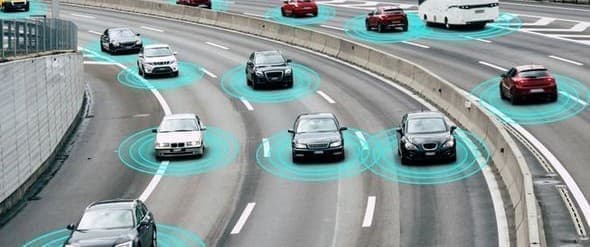General Motors has a grand, visionary concept vehicle up its sleeve that could replace Henry Ford launching the Model T — but where will it be legal to drive?
Cruise, GM’s self-driving vehicle division, last week launched the Cruise Origin, developed with Honda Motor Co. The large white, boxed minivan with an orange roof will be autonomous and designed to carry groups of passengers — and the vehicle will lack a steering wheel or brake pedal. It will bring together a self-driving car with competitive, affordable shared-ride services.
The autonomous taxi will give ride-hailing giants Uber and Lyft another rival, Cruise CEO Dan Ammann said during the vehicle’s introduction in San Francisco. GM is putting all its AV efforts into the Cruise unit these days, and giving the business space to work with competitors like Honda, which became an investor in October 2018.
That’s helped Cruise move more quickly to develop a self-driving electric vehicle platform. GM created the platform and Honda contributed to the engineering and production of the vehicle.
The big question remains: Will it be legal to operate out on public roads? GM is waiting for an exemption from the Federal Motor Vehicle safety standards that would allow Cruise to test vehicles without these manual controls. If that gets approved, GM can deploy up to 2,500 robo-taxis a year that can be hailed via a smartphone app.
States are being more ambiguous about legalizing autonomous vehicles and allowing automated shared-ride services. GM’s Cruise said it has been allowed to test a ride-share service in San Francisco, using employees, and that those cars have traveled a million miles.
Alphabet’s Waymo operates a ride-sharing service using its autonomous Chrysler Pacifica minivans in Arizona that it says has 1,500 monthly active users in the Phoenix metro area.
Competitors have projects in the works. Last year, Volkswagen AG said that it would invest $2.6 billion in the self-driving car startup Argo AI, which is majority-owned by Ford Motor Co.
Related: The Fight For Venezuela’s Oil Is Heating Up
Companies like Waymo, Apple, Uber, Lyft, GM, Ford, VW, and Tesla, want to see the federal government and states resolve the legal and liability issues over autonomous vehicles — cars and commercial trucks, and allowable passenger ride services. That’s the case in other markets in Asia and Europe where self-driving vehicles are being tested and promoted.
Experts on the technology say that will all be taking much longer than originally expected — a decade or more. Consulting company PwC says autonomous vehicles used in robotaxi operations will not reach roads in any significant presence until after 2030.
A Deloitte study launched earlier this month affirms the mixed feelings out there. Nearly half of US consumers (48 percent) of the respondents believe that fully autonomous vehicles will be unsafe; and 58 percent aren’t willing to pay more than $500 for AV technology.
As for the Cruise Origin in its present phase, inside the van, there’s room for up to six passengers — three people sitting on one side and three on the other with empty space in between. But for now, the seats are uncomfortable, something like thin cushions that cover ironing boards. The automaker is likely to present a more comfortable, consumer-friendly vehicle when it rolls off the assembly line. However, it will only be available to transport passengers through its planned ride-hailing service competing with Uber, Lyft, and other mobility companies.
Passengers are given data to watch during the ride, such as how long it will take to reach their destination. Two computer displays hand from the ceiling to inform riders.
Cruise wouldn’t give details such as when or where its new ride-sharing service would debut.
As for now, the federal government has been stating that it’s taking a hands-off approach to regulation on the national level. Elaine Chao, the US transportation secretary, spoke on this question at the CES show earlier this month in Las Vegas. Cho said that this was going to be left to the companies developing these vehicles to self-regulate.
Automakers have their own debates going on internally and with each other about which way is best to go. GM and a few competitors want to see fully autonomous vehicles launched soon, while Toyota and other companies are taking a more cautious, safety-based approach.
By Jon LeSage for Oilprice.com
More Top Reads From Oilprice.com:
- Traders Increase Short Interest In Big Oil Stocks
- 5 Niche Energy ETFs You’ve (Probably) Never Heard Of
- Oil Slides On Rising Crude Inventories


















